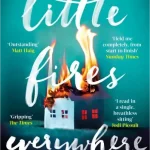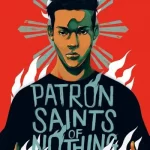
3 Sentence Summary
Ursula K. Le Guin’s “The Ones Who Walk Away from Omelas” presents a captivating psychomyth, exploring the price of a seemingly utopian city’s happiness. The story revolves around the ethical dilemma and the complex relationship between society and individuals. Le Guin’s commentary on morality, collective well-being, and personal sacrifice leaves a lasting impact on readers.
Summary Read Time: Less than 6 minutes
Actual Book Length: 32
First Published in: 1972
Below is the detailed yet quick The Ones Who Walk Away From Omelas book summary:
Part 1
The tale opens amidst the vibrancy of the Summer Festival in the seaside town of Omelas. The air buzzes with joyful anticipation, as jubilant citizens progress towards the Green Fields. Here, eager youngsters prepare for a horse race, their nude forms mirrored by the horses adorned only with vivacious ribbons. The cheerful throng, the glittering harbor, the majestic snow-capped mountains, and the festive flags dancing in the breeze weave an enchanting picture of the town’s celebration.
A pause ensues as the narrator contemplates the portrayal of Omelas and its inhabitants. Assumptions might lead one to envision a king or a list of laws, but Omelas thrives sans these. The blissful citizens are not simpletons, contrary to what their joy might suggest.
The narrator grapples with the prevalent notion that evil is intriguing, and happiness, mundane. Omelas is anything but bland, even without conventional signs of complexity such as a stock market or nuclear weaponry. The narrator yearns to relay this unique complexity, while acknowledging the inevitability of skepticism.
Finally, the narrator encourages the reader to conjure up their own vision of Omelas. What kind of technology does it boast? The narrator muses that happiness doesn’t hinge on flying cars or helicopters. Instead, it might take the form of floating light sources or a cure for the common cold. Ultimately, these details may vary or even be absent altogether without detracting from the city’s blissful essence.
Part 2
The narrative proceeds with the assumption of visitors from neighboring towns, arriving by train to partake in Omelas’ festivities. The grand train station and the bustling Farmers’ Market paint a rich tapestry of community life.
The narrator then toys with the reader’s expectations, hinting at unrestricted sexual freedom, with attractive individuals freely offering their affection. But there’s a key stipulation: there’s no place for religious undertones or guilt. Omelas may also host a drug, drooz, bringing pleasure without addiction or harm. It’s a place that values courage, triumphs without warring, and cherishes life over death. Drooz, in this context, is rarely needed due to their innate contentment.
The story then circles back to the Summer Festival procession reaching the Green Fields. A feast unfolds, and an expectant hush falls over the crowd as a boy with a wooden flute captivates them. As the melody fades, the Festival officially commences with the much-anticipated race.
Suddenly, the narration halts, questioning the reader’s belief in the joy of Omelas’ inhabitants. To add credibility, the narrator describes a dark secret: a cramped basement room, housing a neglected, fear-stricken child, clearly affected by such inhumane treatment. The child, never allowed to leave, survives on meager food and water, yearning for release. This harrowing secret is a stark contrast to the city’s outward splendor, leaving the reader in haunting introspection.
Part 3 – How Does “The Ones Who Walk Away from Omelas” Book End?
Omelas’ citizens, shockingly, are aware of the child’s ordeal. The city’s prosperity, they believe, is inextricably linked to the child’s suffering. This truth is disclosed to each child between eight and twelve, who, despite their initial revulsion, are powerless to intervene. To alleviate the child’s torment would, they are told, annihilate Omelas’ utopia. No kindness, even in words, is permitted towards the child.
As time passes, the children exposed to this secret grow to rationalize the child’s condition, convincing themselves that freedom wouldn’t better the child’s life, who’s grown accustomed to pain and would find joy alien. As the residents reconcile with this cruel reality, they begin to associate their own happiness with the child’s agony, believing it heightens their appreciation of life. The city’s music, architecture, and their very freedom acquire a deeper meaning in the backdrop of the child’s misery.
The narrative reaches its climax, questioning the reader’s acceptance of Omelas’ authenticity with the reveal of the tormented child. However, not everyone conforms to the city’s twisted balance. Occasionally, upon encountering the child’s suffering, some individuals reject acceptance, choosing instead to abandon Omelas entirely.
They venture alone into the unknown, towards the mountains, never to return. The narrator confesses ignorance of their destination, but affirms these individuals, the ones who walk away from Omelas, depart with certain resolve.





